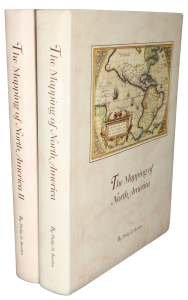Rare Maps and Prints
- World & Celestial
- North America
- West Indies, South & Central America
- British Isles
- British Isles
- English counties
- Large-scale
- Bedfordshire
- Berkshire
- Buckinghamshire
- Cambridgeshire
- Cheshire
- Cornwall
- Cumberland
- Derbyshire
- Devon
- Dorset
- Durham
- Essex
- Gloucestershire
- Hampshire
- Herefordshire
- Hertfordshire
- Huntingdonshire
- Islands
- Kent
- Lancashire
- Leicestershire
- Lincolnshire
- Middlesex
- Norfolk
- Northamptonshire
- Northumberland
- Nottinghamshire
- Oxfordshire
- Rutland
- Shropshire
- Somerset
- Staffordshire
- Suffolk
- Surrey
- Sussex
- Warwickshire
- Westmoreland
- Wiltshire
- Worcestershire
- Yorkshire
- Wales
- Scotland
- Ireland
- Western Europe
- Eastern Europe
- Middle East
- Africa
- Asia
- Australasia & Pacific
- Decorative Prints
- Title Pages
Mr. Philip D. Burden
P.O. Box 863,
Chalfont St. Giles, Bucks HP6 9HD,
UNITED KINGDOM
Tel: +44 (0) 1494 76 33 13
Email: enquiries@caburden.com
This is the first map of the county of Durham to be produced at a scale of one inch to the mile and the only one issued in the eighteenth century. It was surveyed by Lieutenant Andrew Armstrong and his son Mostyn John Armstrong; both were cartographers although only the son published any atlases. At the time Andrew Armstrong described himself as “Lieut. on half pay from the 32nd Regt.” Their focus was on Scottish related material with the notable exception of the large scale county surveys of the neighbouring county of Northumberland which would be published the following year and two further of Lincolnshire in 1779 and Rutland in 1780. It was engraved and published by Thomas Jefferys. There are three states all published in rapid succession in the same year this being the third state with the imprint of both Robert Sayer and Thomas Jefferys. An Explanation upper right helps to identify the Market Towns, Parishes, Churches, Seats, Farms or Cottages, Parks, Turnpike Roads, ‘Inclosed’ partial and open roads and Roman points of interest. Also indicated are Coal Pits and Lead Mines along with natural features such as Hills, Woods and Parks etc. A fine plan of the town of Durham appears lower left accompanied by a compass rose and encapsulated by an ornate border. A nearby note records the fact that the latitude figures used were taken by Professor Hornsby in 1765. The longitude were deduced from the solar eclipse of 1766 and compared with those made at London, Sherborn and Oxford. The map is dedicated to Henry Earl of Darlington, the Lord Lieutenant of the county. The title appears in an ornate cartouche upper left with a mining scene. To its right is a model of the Bases and Triangles used to triangulate the county. All issues are rare, particularly this one. Provenance: private English collection. Harley, Brian ‘The Re-Mapping of England, 1750-1800’ in Imago Mundi 19 pp. 56 & 63; Rodger (1972) 101; Worms & Baynton-Williams (2011).
ARMSTRONG, Andrew
The County Palatine of Durham Survey'd by Capt Armstrong and Engraved by Thomas Jefferys Geographer to His Majesty MDCCLXVIII
Robert Sayer and Thomas Jefferys, London, 1768
Four uncut sheets each 490 x 630 mm., in early outline colour, with deckled edges in EXCELLENT CONDITION.
Stock number: 7216
SOLD






